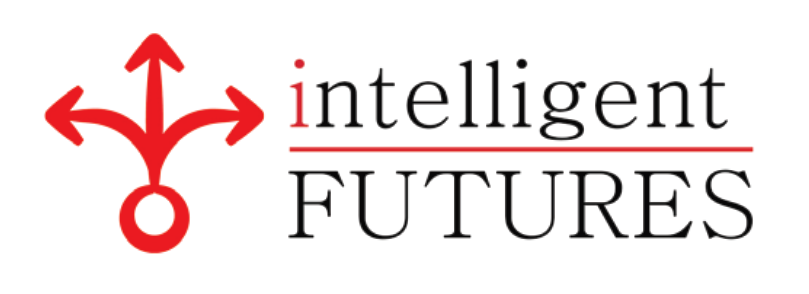Peter Drucker (1997) was speaking to the importance of horizon scanning when he observed that ‘Executives are so enchanted by the internal data the computer generates, that they have neither the mind nor the time for the outside. Yet all great change comes from outside the firm, not inside.’ The business environment in which we are operating provides a context for our strategy, policy, programs and projects. Context allows us to assign meaning and to assess implications for our organization.
Drucker’s observation is even more important in today’s fast changing, world with its potential for variety of outcomes. Hindsight no longer leads to foresight, making it more difficult for organisations to understand the origin and nature of risks. Of most concern are ‘strategic risks’, which arise from unexpected, unseen or unrecognised change at the systemic level, which discount foundational assumptions. Again, drawing from Drucker, ‘the greatest danger in times of turbulence is not the turbulence; it is to act with yesterday’s logic.’ Navigating today’s business environment requires new ways of thinking, seeing and acting in the world, informed by a steady and rich flow of pertinent signals of change. But in our changing world, the problem space comprises an evolving set of interlocking issues and constraints. Indeed, there is no definitive statement of the problem, and you don’t really understand the problem until you have edged towards a tentative solution. And details alone are blind.
The horizon scanning challenge is more than a technical or process issue; the challenge is founded in the social domain of the business, especially stakeholders. The many stakeholders present – people who care about or have something at stake in how the problem is resolved and make the problemsolving process fundamentally social. Getting the right answer is not often as important as having stakeholders collectively contributing to and accepting whatever solution emerges.
Also, the constraints on the solution, such as limited resources and political ramifications across the business, change over time. They change because many are generated by the stakeholders, who come and go, change their minds, fail to communicate, or otherwise change the rules by which the problem must be solved. Since there is no definitive problem, there is no definitive solution. This problem-solving process usually ends when you run out of time, money, energy, or some other resource, not when some perfect solution emerges.
A vital social complement to horizon scanning is the practice of sensemaking. The term ‘sensemaking’ was introduced by Karl Weick (2001), to refer to how we structure and articulate the unknown so as to be able to act in it. Weick (2005) likened sensemaking to cartography. Maps can
provide hope, confidence and the means to move from anxiety to action. By mapping an unfamiliar situation, some of the fear of the unknown can be abated. The landscape or map provides a plausible understanding of a dynamic world; testing this map with other maps we’ve created through collectively mustering insights; and then refining, or abandoning the map depending on its credibility.
Insight generation is at the heart of sensemaking. Gary Klein (2013) suggests insights trigger an unexpected shift to a new set of beliefs that are more accurate, more comprehensive, and more useful – which change how we understand, how we act, how we see, and what we desire.
Insights are disruptive. Insights may come without warning, take forms that are unexpected, and open up unimagined opportunities. By enabling decision-makers to have a better grasp of what is going on in their operating environment, sensemaking facilitates other activities such as visioning, relating, and inventing.
A framework to bring horizon scanning and sensemaking together, incorporates four modes of activity – observation, analysis, synthesis, and articulation – as the practitioner moves from the real world to the abstract world and back again. The move to the abstract world occurs as new information is collected, and new actions are taken. Then as patterns are identified, and new information is labelled and categorised, the abstract becomes real again through intelligence reporting. It means looking for a unifying order even if we are not sure one exists, figuring out how to represent the order, and continuing to play even in the absence of order.
A disciplined approach to horizon scanning – with sensemaking at its core – helps mitigate pathologies associated with deep-seated features of the human condition – in both individual and social settings – especially perceptual, cognitive and methodological weaknesses. Key aspects of a disciplined approach include:
- Take a systems view and look first at the whole then the parts. Seek the underlying causality that creates patterns and determines how they unfold. Identify and articulate the differences that matter.
- Be purposeful; starting with your organisation’s strategic intent. Ask why are we expending this intelligence effort? What risks does it manage? What aspects of change are we seeking to understand? What are our learning objectives?
- We have a social obligation to engage multiple perspectives, and share information for the creation of new knowledge. We realise sensemaking power by mobilising collective intelligence around differences that matter.
- Actively disrupt entrainment of thought that leads to premature convergence; for example, do not seek clarity where clarity is not possible, and be prepared to hold ideas in suspension.
- Be action-oriented in the present; ask: where can we see change; what can we change; (of that set), where can we monitor the impact of the change; and (of that set) where can we amplify success or recover from failure.
Making sense of our changing world involves continuously looking for and providing evidence, generating and testing hypotheses, all while ‘playing the game’. It is a search for some kind of harmony between two intangibles: a context that we cannot properly describe; and a form of action that we have not yet designed. Horizon scanning with sensemaking at its core enables decisionmakers to explore the wider system, create a map of that system, and act in that system for strategic learning. In so doing, we can structure the unknown to reframe the complexity in the world as a springboard for action.
https://www.linkedin.com/pulse/how-make-sense-changing-world-brett-peppler-faipio-maicd/

